


MBHI Project Goals 2002-2003
To identify migrant/seasonal farm workers receiving health care services at Institute for Border Community Health Education Clinical sites
To initiate health education interventions
To develop a database on usage of herbal remedies by migrant farm workers
To develop a database of all services in the area for which migrant farm workers qualify
To distribute a brochure of services to appropriate agencies
To survey migrant farm worker housing in El Paso, Hudspeth, and Doña Ana Counties
MBHI Project Goals 2001-2002
To develop a regional database of area migrant farm workers
To establish foundation for future research into migrant farm worker health issues
To initiate health education interventions
To evaluate obstacles preventing migrant farm workers from accessing health care in the border region

Funding
This project was supported in part by funds from the Office of Rural Health Policy (ORHP) Special Projects, Health Resources and Services Administration (HRSA), Department of Health and Human Services (DHHS), under grant number #1-DIA-RH-00007-01 entitled "Migrant Border Health Initiative."

Housing Site Survey
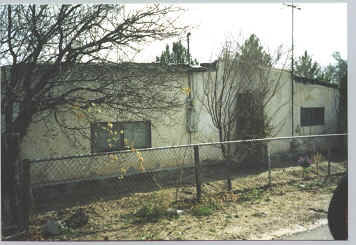
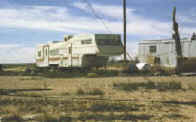

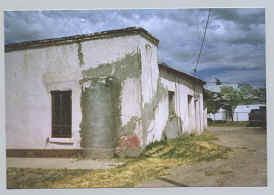
Migrant farm worker housing sites were surveyed in the counties of El Paso, Hudspeth, and Doña Ana. Both single person/family housing as well as housing provided by employers, such as migrant camps, were identified. The location and condition of the 260 housing sites surveyed were documented. Pictures were taken of numerous dwellings and an Excel database was created to manage the data. These housing sites were identified with the assistance of Region 19 Migrant Education Program personnel and area health promotoras.

Kellogg Community Partnership Sites
A survey was conducted to determine the extent of use of Kellogg Community Partnership sites for health care services by migrant and seasonal farm workers in El Paso County. Surveys were conducted by the promotora at each of the Kellogg sites located in Fabens, TX, San Elizario, TX and Socorro, TX.

Health Education
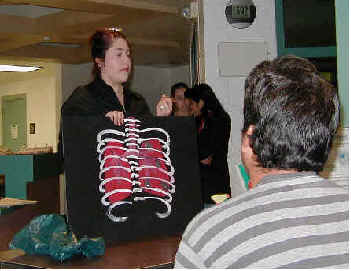
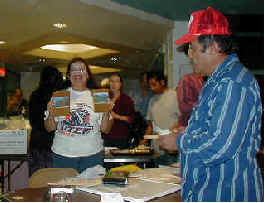


Interviews with migrant farm workers in the 2001-2002 study of health care needs revealed a lack of basic health information and resources available to them. Educational programs were developed by the health education students in the College of Health Sciences at UTEP. Several health education presentations were given to the migrant workers at the Centro de los Trabajadores Agrícolas, also known as the Migrant Center, during the fall of 2002 and the spring of 2003. These educational workshops were conducted in the evenings at the center when the majority of the workers were present. The presentations consisted of 2 - 4 health education students conducting a class on a health issue relevant to the work and health conditions encountered by the workers. Realizing that the vast majority of migrant farm workers have less than a sixth-grade education and limited reading skills, the students presented their topic in Spanish and utilized numerous visual aids and strategies to facilitate the worker's understanding of the subject matter. The classes given included the topics of diabetes, AIDS, pesticide exposure, skin cancer, dental hygiene, stress management, handwashing, and TB. After each presentation, the migrant farm workers in attendance were given snacks and beverages as well as aids/supplies such as toothbrushes, sunscreen, caps, sunglasses, and water bottles.
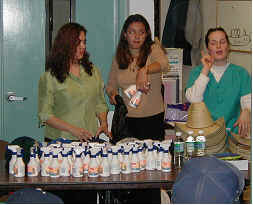

Herbal Remedies Usage

One hundred migrant workers were surveyed to determine the extent of use of herbal remedies for various indications. All the workers who participated in this study were currently employed in the U.S. agricultural industry and were temporarily residing at the Centro de los Trabajadores Agrícolas. Information was obtained from the interview subjects on the specific herbal remedies used, the source(s) of the herbal remedies, the rationale for using the herbs, the length of time the remedy was used and their perceived effectiveness. Any prescription or over-the-counter medications also being taken concurrently with the herbal remedies was noted.

Resource Handbook

A handbook listing agencies involved in assisting migrant and seasonal farm workers in El Paso and Doña Ana Counties was developed as part of the Migrant Border Health Initiative. The handbook lists all educational, medical, social service, and legal agencies including their address, phone number, and a brief description of the services rendered and is written in both English and Spanish. Migrant/seasonal farmworkers lack the resources and time to inform themselves of these services and most are unaware that they exist at all. The design of the handbook facilitates carrying it in a shirt or pants' pocket. Also included is a personal directory for jotting down important information such as names and contact information for contractors.

Findings and Outcomes 2002 - 2003
1. A survey of
the BCHE clinical sites at San Elizario, Fabens and Socorro revealed that a very
small number of migrant and seasonal farm workers are accessing these clinics
for health care. Of 979 clients surveyed at the BCHE clinical sites during an
eight-month period, only 7.8% met the criteria for classification as migrant or
seasonal farm workers.
2. Educational
programs focused on medical issues pertinent to migrant and seasonal farm
workers in the border region were developed by the health education students in
the College of Health Sciences at the University of Texas at El Paso. Several
health education presentations were held at the Centro de Trabajadores Agrícolas
(Migrant Center) at times when the majority of migrant/seasonal farm workers
residing at the center were present. The
presentations were conducted in Spanish and included many visual aids and
strategies for teaching populations with a limited education and therefore
limited reading and comprehension capabilities. Active participation by the
workers was encouraged in each of the presentations. (See Publications –
Article by Thompson & Poss).
3. Migrant/seasonal farm workers’ housing sites were surveyed in El Paso, Hudspeth, and Doña Ana Counties to determine type of housing, condition of the housing, and the areas in which they were concentrated. Of a total of 260 housing sites surveyed, 112 were single-family housing, 70 were apartments, 59 were trailers, 16 were duplexes, and 3 were quadriplexes. The condition for all types of housing was reported as follows:
22 (8.5%) – very poor 97 (37.3%) – poor 61 (23.5%) - fair
The dwellings occupied by the workers were not
concentrated in any one particular area but were located through out the three
counties.
4. One hundred active migrant
and seasonal farm workers were interviewed to determine their use of herbal
remedies for various indications. The
data collected revealed a prevalence of herbal remedy usage among this group for
a wide range of medical conditions and diseases.
The most common alternative remedies used by all the workers surveyed
were lemon, garlic, peppermint, and chamomile which were used for a variety of
ailments. The majority cited
tradition and low cost as the main reasons for using herbal and supplemental
remedies instead of pharmaceuticals. (See Manuscripts Submitted – Manuscript
by Poss, Pierce & Prieto).
5. A handbook listing agencies involved in assisting migrant/seasonal farm workers in the counties of El Paso and Doña Ana was developed in both English and Spanish. The handbook lists all educational, medical, legal, and social service agencies that are available to the farm workers and to populations with low income and/or special needs in these counties. Included along with the agency name are the agency’s address, phone number, and a brief description of the services rendered. Over 500 of these handbooks were distributed to the appropriate agencies and to area migrant and seasonal farm workers.

1. A
total of 150 migrant and seasonal farm workers were interviewed in the
agricultural fields and at the Centro de Trabajadores Agrícolas (Migrant
Center). (See Publications – Article by Poss & Pierce)
2. The survey responses were utilized to develop a database of area migrant farm workers which included the following sections:
a. demographics b. medical history c. occupational exposure/injury
d. mental health e. dental health f. nutrition g. health education
h. medical services
3. The data collected revealed the following about area migrant/seasonal farm workers:
a. Most (88%) were male, married (79%), had worked primarily in the fields (95%), made an average of $650/mo., and resided (60%) in the U.S.
b. Average level of education was 5.1 yrs. and the majority (78%) did not speak English.
c. Average number of years employed in the agriculture industry in the U.S. was 16.1 yrs.
d. Most workers perceived themselves to be generally healthy. The most frequently reported chronic health problems were diabetes, hypertension, skin problems, arthritis, and heart disease.
e. Occupational injuries were significant with 23% having been injured on the job.
f. Over half were familiar with the symptoms of pesticide poisoning and about a third had been exposed and suffered symptoms of pesticide poisoning.
g. The majority of migrant farm workers reported eating a high-fat, high-carbohydrate diet and less than 50% ate vegetables on a daily basis.
h. The average body mass index was 27.9 putting the majority of these workers at high risk for diabetes and cardiovascular disease.
i. Less than one-third responded that they had received any type of health education information while employed in the U.S. but of those who had, 100% claimed that it was beneficial.
j. The vast majority (85%) felt they were emotionally and mentally healthy.
k. One-third reported having experienced sadness, depression, and/or anxiety as a direct result of their employment and over 50% were concerned about their finances and their working and living conditions.
l. Most of the respondents (92%) had never received dental care in the U.S. while employed as farm workers and most (92%) did not have any type of dental insurance.
m. 95% did not have any type of health care coverage and the most common problem reported in accessing health care in the U.S. was the inability to pay for services.
n. The majority rated the quality of health care they had received in the U.S. as excellent to good.

References
Poss, J. & Pierce, R. (2003). Characteristics of selected migrant farmworkers in West Texas and Southern New Mexico. Californian Journal of Health Promotion, 1(2), 138-147. www.cjhp.org
Thomson, S. & Poss. J. (2003). Health education for the migrant farm worker community in El Paso, Texas through the integration of faculty research and student learning. Californian Journal of Health Promotion, 1(2), 223-228. www.cjhp.org
Manuscripts submitted:
Poss, J.E.; Pierce, R.; & Prieto, V. (submitted). Herbal remedies used by migrant farm workers in the Paso del Norte region. Journal of Rural Health.
Links
California Institute for Rural Studies - http://www.cirsinc.org/
Farmworker Justice Fund - http://www.fwjustice.org/
Migrant Clinicians Network - http://www.ncfh.org/
National Center for Farmworker Health - http://www.ncfh.org/

For further information or comments contact:
University of Texas at El Paso
500 West University Avenue • El Paso, Texas 79968 • (915) 747-5000

Credits
Dr. Jane Poss, DNSc, ANP, C
Co-Principal Investigator
Rebecca Pierce, M.S., M.T.
Program Director
Veronica Prieto
Administrative Secretary